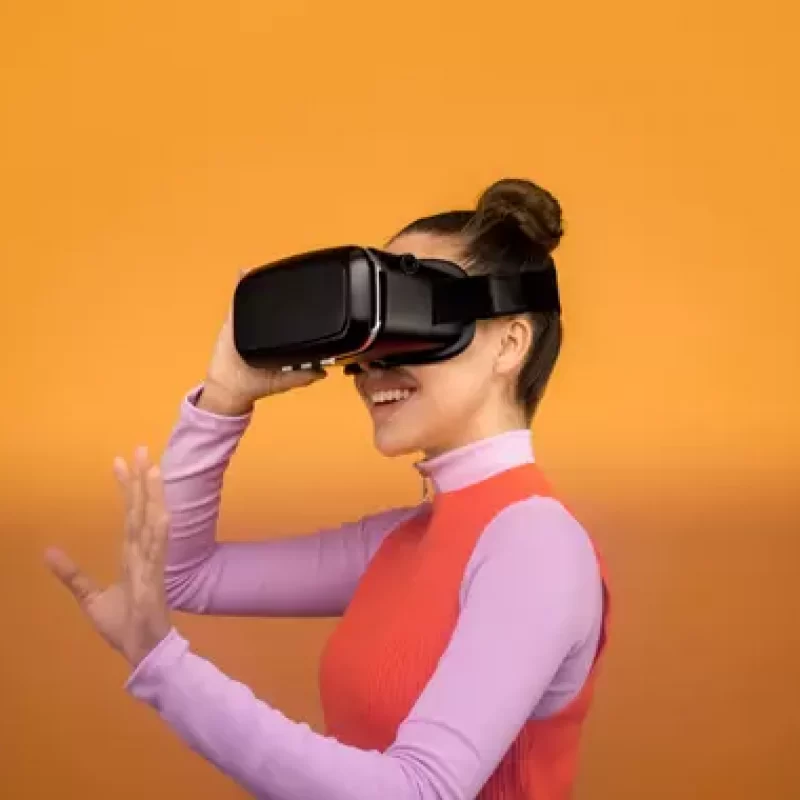The application of virtual reality for new training experiences is rapidly gaining popularity. The new frontier is soft skills training. HRI believes the most interesting developments are in DE&I, leadership and coaching.
Virtual reality and augmented reality
Often, when talking about virtual reality, we put two concepts together: virtual reality and augmented reality. Let’s better define what we mean:
- Virtual reality (VR) is a simulated reality technology. The three-dimensional environment is computer-generated or captured with lenses capable of shooting the scene in 360 degrees. Special devices are used, including viewers, headsets, and gloves/controllers. VR is immersive, isolating the user from the environment.
- Augmented Reality (AR), on the other hand, enhances the perception of the world around us with a variety of content and information. For example, there are Apps that allow one to “see” a (virtual) product resting on a table or virtually wear clothes.
Both are used in training but extreme summary:
- AR has proven effective mainly in training hard skills (technical tasks such as maintaining a machine)
- VR is increasingly being used for soft skills training.
In the following we will focus on virtual reality for new training experiences. In fact, VR makes it possible to
- Interact in the virtual environment with various different people and roles;
- Effectively impersonate someone different from us by bringing a multiplicity of situations to life.
- Create different environments by localizing the situation: an office, a meeting room, a warehouse, etc.
Benefits of virtual reality for new educational experiences
A recent study by the company PWC on the use of virtual reality What does virtual reality and the metaverse mean for training? showed its benefits. One thousand U.S. managers divided into three training macro-groups were involved in the study: in-person, e-learning, v-learning. The results are definitely noteworthy.
In general, the exponential growth of VR applications to training is decreasing its cost. For example, in the hôtellerie sector, it is used by Hilton in training its staff. In automotive, Stellantis has embarked on training that uses VR in logistics.
Less time spent on training
Training done through virtual reality takes 4 less time than training done in the classroom. For example, 30 minutes of virtual reality training is equivalent to two hours of “traditional” training.
Greater confidence in using the concepts learned
Through virtual reality, one can practice in a “safe” environment that allows for trial and error. Think, for example, of the need to give negative feedback to an employee. Those who have attended the VR course are more confident in putting what they have learned into practice than in classroom or e-learning training (40% and 35%, respectively).
High emotional involvement
Emotional involvement, which we know is important in learning (for an overview of the topic see, for example, Emotions and Learning by Reinhard Pekrun), is far higher – up to 5 times higher according to the Pwc study – using virtual reality.
“Tell me and I forget; show me and I remember; engage me and I learn.”
Benjamin Franklin
Increased concentration
During classes we are often impatient, distracted by smartphones or simply thinking about something else.
With VR learning, given the immersiveness of the experience, users are much less distracted: they are 4 times more focused than in e-learning and 1.5 times more focused than those taking the course in the classroom.
Issues with VR
Having briefly looked at the advantages, let us try to understand what the issues of VR might be.
First, cyber security needs to be addressed by creating a secure access logic and IT architecture.
Second, when VR is applied remotely or in several locations at once, there is the issue of transmission bandwidth, unfortunately still very much present in Italy. The use of fiber connections in these cases is necessary.
Finally, one must have a clear and transparent policy regarding data collected during sessions and subsequent processing.
Applications and experimentation in HRI
HRI wants to create an experimental laboratory to use VR in training on DE&I, leadership, and coaching.
Through the creation of different places and “people,” participants will experience realistic situations. Let’s give some examples. Let’s think of having to interact with a person with a disability (DE&I). Let’s imagine a simulation of a “difficult” confrontation with one’s supervisor (coaching), or returning feedback to an employee (leadership).
Virtual reality also makes it easier to take psychometric measurements (e.g., measuring response time) by giving the ability to generate and analyze data to find insights. Through the information and insights we will be able to create increasingly effective experiences and training paths.
We are more than open to discussion: if you are interested in these issues please comment on this article or write to us (info@hrintelligence.it) for more information.




